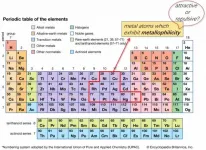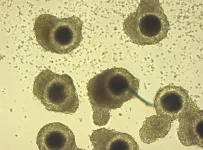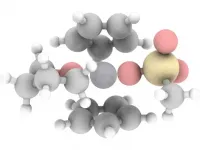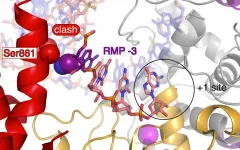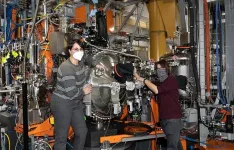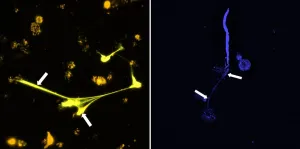Metal-Metal closed-shell interaction, also known as metallophilicity, has a huge impact in diverse fields of chemistry, such as supramolecular chemistry and organometallic chemistry. Early reports on metallophilicity could be traced back to the 1970s. Many leading theoretical chemists around the world made contributions in the field, such as Roald Hoffmann (1981 Nobel Laureate in Chemistry), Pekka Pyykk?, etc.. Metallophilicity is important in the fabrication of self-assemblies by transition metal complexes, which has demonstrated profound applications in organic semiconductors, bio-sensing and functional optoelectronic materials.
Going beyond conventional wisdom The term "metallophilicity" originated from Europe and has been extensively used by chemists as a guiding principle in molecular design studies and to rationalize the spectroscopic properties of transition metal complexes. Up to now, the general consensus of metallophilicity in the academic community is "attractive", which has been conceived to come from orbital hybridization and/or relativistic effect of heavy metal atom, such as gold or platinum (3rd row metal in the elemental table). Together with Professor Che and Dr. Yang, Postdoctoral Fellow Dr. Qingyun WAN and co-workers questioned the conventional wisdom of coordination chemists, concluding that the metallophilicity is not an attractive interaction in organometallic complex, but is actually repulsive in nature due to strong M-M' Pauli repulsion.
They performed a combined theoretical and experimental research on metallophilicity and observed strong M-M' Pauli repulsion in organometallic complex having closed-shell electronic configurations, which will provide a new theoretical perspective on the possibility of making new supramolecular materials with inexpensive earth-abundant transition metal complexes, such as that of palladium or silver or nickel (1st or 2nd row metals in the elemental table). It is also a crucial achievement in the fundamental understanding of weak intermolecular interactions.
Background and achievement In the microworld of small molecules, there are many types of interactions. Metallophilicity describes the interaction between metal atoms as having closed-shell electronic configurations. In the early 1970s, chemists observed an interesting phenomenon that two closed-shell metal atoms could form a short metal-metal distance. A special "attraction" was proposed to exist between two metal atoms, pushing two metal atoms coming close. Many theoretical models were raised to account for such an attachment, such as the model of orbital hybridization or relativistic effect of the heavy metal. However, these theoretical models have conflictions with some experiment observations, like the relatively shorter Ag-Ag distance in Ag complexes compared to the Au-Au distance in the Au analogues. Thus, this problem has remained controversial for a long time and always plagued inorganic and theoretical chemists.
The researchers at HKU used high-level calculation methods and experimental techniques to investigate such a tough problem, and proved that the metallophilicity is repulsive in nature due to strong M-M' Pauli repulsion. They concluded that orbital hybridization and relativistic effect would strengthen the metal-metal Pauli repulsion when forming a close metal-metal contact. Intermolecular dispersion and electrostatic interaction will counter-balance the metal-metal repulsion, leading to a short metal-metal distance. This theoretical model could well explain why Ag-Ag distance is shorter than the Au-Au distance, due to weaker Ag-Ag Pauli repulsion which is induced by less orbital hybridization in the Ag complex.
By a conservative estimation, there were more than 5,000 papers published in the literature related to "attractive metallophilicity". The statement of "repulsive metallophilicity" is first proposed by the research team in their recent PNAS publication. This work was also recognized by Professor Harry GRAY in Caltech, who was awarded the Wolf Prize in Chemistry in 2004, one of the most honorable awards in the field.
INFORMATION:
About the research team
The research was conducted by a joint team under Professor Chi-Ming Che and Dr. Jun Yang from the Research Division for Chemistry and Department of Chemistry. Postdoctoral fellow Dr. Qingyun Wan from Professor Che's group is the first author, while Dr. Wan, Dr. Yang and Professor Che are co-corresponding authors. Dr. Wai-Pong To, Research Assistant Professor from Professor Che's group, is another chemist contributing to the research.
The research has secured continuous support from the Research Grants Council of Hong Kong, State Key Laboratory of Synthetic Chemistry at HKU and also the Information Technology Services of the University. The research team would also like to show their gratitude to the Basic Research Program-Shenzhen Fund, and the Major Program of Guangdong Basic and Applied Research.
About Professor Chi-Ming Che
Professor Chi-Ming Che received his BSc (1978) and PhD (1982) degrees from HKU. Following his research studies at the California Institute of Technology from 1980 to 1983, he joined HKU Chemistry in 1983 and was promoted to Chair Professor in 1992. From 1999-2016, he was appointed as Dr. Hui Wai-Haan Chair of Chemistry. He is currently the Zhou Guangzhao Professor in Natural Sciences and the Director of State Key Laboratory of Synthetic Chemistry at HKU.
Professor Che has received numerous awards/honors. At the age of 38, he was elected as a member of the Chinese Academy of Sciences (CAS), becoming the first Hong Kong scientist to receive this honour and the youngest member of CAS at that time. He is also the first in the local community to receive the First Class Prize of the State Natural Science Award of China (2006). In 2013, he was elected to Foreign Associate (later renamed as International Member) of National Academy of Sciences USA. In 2015, he was elected as a Founding member, a Director and the Vice-President of The Academy of Sciences of Hong Kong. Since 2016, he has been serving as the Head of Department of Chemistry at HKU. His current H-index is 120. For more information about Professor Che and his research group, please visit: https://cmche-hku.weebly.com/prof-c-m-che.html.
About Dr. Jun Yang
Dr. Jun Yang is currently an Assistant Professor of Theoretical Chemistry at HKU. His research group is interested in developing and utilizing ab-initio quantum computational methodologies for many-body chemistry problems. Recent research activities include the development of low-scaling correlated electronic structure methods, many-body excited states of strong correlation, mean-field theory for nonadiabatic electronic-vibrational couplings as well as machine learning extension of these methods for realistic materials. For more information about Dr. Jun Yang and his research group, please visit: https://www.junyanglab.com.
About Dr. Qingyun Wan
Dr. Qingyun Wan received her BSc degree in Material Physics from University of Science and Technology of China in 2014. Under the supervision of Professor Li-Zhu WU and Professor Chen-Ho TUNG in the Technical Institute of Physics and Chemistry, Chinese Academy of Sciences (CAS), She conducted her final-year project in the area. In 2014, she moved to HKU and joined Professor Chi-Ming CHE's research team as a graduate student. She then had an exchange in Massachusetts Institute of Technology (MIT) in 2018 for half a year, working in the lab of Professor Christopher C CUMMINS. Her research interests include the synthesis and application of supramolecular materials based on organometallic complexes, and computational chemistry. Dr. Wan has published 16 peer-reviewed research articles, including 5 first-authored and/or corresponding-authored papers in Chem (1), JACS (1), ACIE (2) and PNAS (1).
Link to the research paper: https://www.pnas.org/content/118/1/e2019265118.short.
